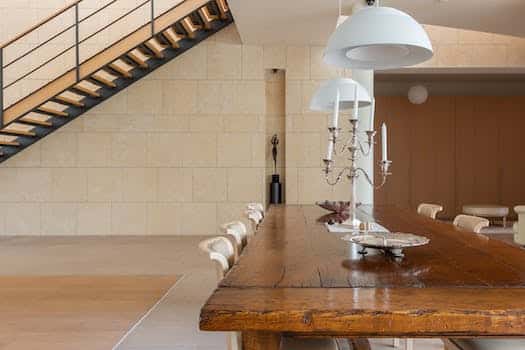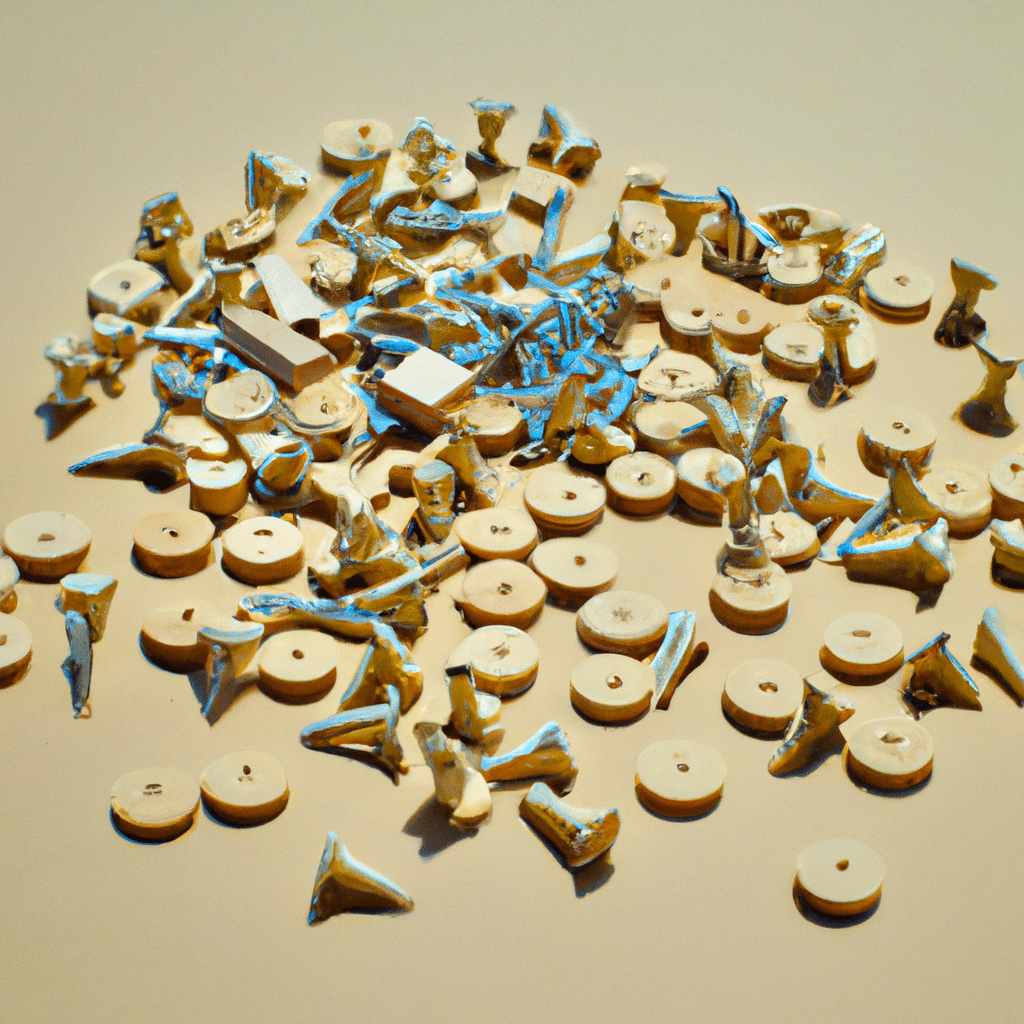In conclusion, making a table lamp is a fun and rewarding project that can add a personal touch to any room in your home. With a few simple materials and some basic tools, you can create a custom lamp that reflects your style and personality. Follow these step-by-step instructions to get started on your own table lamp today!
- 1. Introduction
- 1.1. What is a table lamp?
- 1.2. Why make your own table lamp?
- 1.3. What tools and materials will you need?
- 2. Step 1: Design and Planning
- 2.1. Choose a lamp design
- 2.2. Select the type of lamp base and shade
- 2.3. Determine the size and height of the lamp
- 2.4. Sketch out a basic plan of your lamp design
- 2.5. Create a list of materials needed
- 3. Step 2: Prepare the Lamp Base
- 3.1. Select the type of base material
- 3.2. Cut the base to the desired size and shape
- 3.3. Drill a hole for the lamp rod
- 3.4. Sand and smooth the base
- 3.5. Paint or stain the base (optional)
- 4. Step 3: Assemble the Lamp Rod and Socket
- 4.1. Attach the lamp rod to the socket
- 4.2. Thread the wire through the lamp rod
- 4.3. Connect the wire to the socket
- 4.4. Attach the harp and finial to the socket
- 4.5. Test the socket and wiring for safety
- 5. Step 4: Install the Lampshade
- 5.1. Select the type of lampshade
- 5.2. Attach the shade to the harp
- 5.3. Adjust the harp to the desired height
- 5.4. Test the stability of the shade
- 5.5. Add decorative elements (optional)
- 6. Step 5: Finishing Touches
1. Introduction
Table lamps are a great way to add a touch of style and functionality to any room. Whether you’re looking to create a lamp to match your home decor or just want a fun DIY project, making a table lamp is a great place to start. In this step-by-step guide, we’ll walk you through the process of making your own table lamp from start to finish. From choosing the right materials to wiring your lamp, we’ve got you covered. So let’s get started!
1.1. What is a table lamp?
Table lamps are a common household item that provides ambient lighting in a room. They come in various sizes, shapes, and designs, and can be made from a variety of materials such as glass, ceramic, and metal. Table lamps are often placed on nightstands, desks, or end tables and can be used for reading, working, or simply adding a decorative touch to a room. In this step-by-step guide, we will show you how to make your own table lamp from scratch.
1.2. Why make your own table lamp?
Making your own table lamp can be a fun and rewarding DIY project. Not only do you get to create a unique piece of decor for your home, but you also have the satisfaction of knowing that you made it yourself. In addition to being a creative outlet, making your own table lamp can also save you money compared to buying a pre-made lamp from a store. Plus, you have complete control over the design, materials, and colors used in your lamp. So why not give it a try and make your own table lamp today?
1.3. What tools and materials will you need?
Before starting the process of making a table lamp, it is important to gather all the necessary tools and materials. The basic tools you will need include a saw, drill, hammer, screwdriver, pliers, wire stripper, and a hot glue gun. As for materials, you will need a lamp kit, lampshade, lamp base, electrical cord, light bulb, wood or metal for the lamp base, and any decorative elements you desire. It is important to choose materials that complement each other and fit the style you want for your lamp. Once you have all the tools and materials gathered, you can begin the process of making your own table lamp.
2. Step 1: Design and Planning
The first step in making a table lamp is to design and plan your project. This means deciding on the style, size, and materials you will use. You should also consider the purpose of the lamp and where it will be placed in your home. Once you have a clear idea of what you want to create, you can begin the planning process. This may involve sketching out your design, creating a list of materials, and estimating the cost and time needed to complete the project. Taking the time to carefully plan your project will ensure that you end up with a beautiful and functional table lamp that meets your needs and exceeds your expectations.
2.1. Choose a lamp design
The first step in making a table lamp is to choose a design that fits your style and needs. Consider the overall look and feel of the room where the lamp will be placed, as well as the purpose of the lamp. Do you need a bright light for reading or a softer light for ambiance? Once you have a general idea of what you are looking for, browse online or visit a home decor store to get inspiration and ideas for lamp designs. You can also consider repurposing an old lamp or using a unique object as the base for your lamp. The possibilities are endless, so take your time and choose a design that you love and will enjoy creating.
2.2. Select the type of lamp base and shade
Choosing the right type of lamp base and shade is crucial in making a table lamp that not only looks great but also functions well. There are many options available in the market, so it’s important to consider your personal style and the overall design of the room where the lamp will be placed.
The lamp base can be made of various materials such as ceramic, glass, metal, or wood. It can also come in different shapes and sizes. The most popular shapes include round, square, and cylindrical. The size of the base should be proportional to the size of the shade and the overall height of the lamp.
The shade is another important component of the table lamp. It can be made of different materials such as fabric, paper, or glass. The shape and size of the shade should complement the base and the overall design of the lamp. The height of the shade should also be proportional to the height of the base.
When selecting the type of lamp base and shade, it’s important to consider the function of the lamp. If it’s meant to provide ambient lighting, a shade that diffuses the light evenly is ideal. If it’s meant to provide task lighting, a shade that directs the light downward is recommended. Lastly, make sure that the lamp base and shade are compatible with each other and the light bulb that you plan to use.
2.3. Determine the size and height of the lamp
When designing and planning your table lamp, it’s important to determine the appropriate size and height of the lamp. Consider the size of your table, the purpose of the lamp, and the design style you want to achieve.
One rule of thumb is that the lamp should be about 1.5 times the height of the table it’s sitting on. For example, if your table is 18 inches tall, the lamp should be around 27 inches tall.
Additionally, consider the size of the lampshade you want to use. The shade should be proportional to the size of the lamp base. A general guide is that the shade should be about two-thirds the height of the base.
By taking these factors into account, you can ensure that your table lamp will be both functional and aesthetically pleasing.
2.4. Sketch out a basic plan of your lamp design
Before starting the actual process of making a table lamp, it is important to have a clear idea of what you want your lamp to look like. This involves sketching out a basic plan of your lamp design. Consider the size and shape of the lamp, the type of materials you will use, and the overall style you want to achieve. This will help guide you through the rest of the process, ensuring that you create a lamp that meets your vision and needs.
2.5. Create a list of materials needed
1. Lamp Kit
2. Lamp shade
3. Lamp base
4. Lamp harp
5. Bulb
6. Electrical cord
7. Wire stripper
8. Pliers
9. Screwdriver
10. Glue gun
11. Glue sticks
12. Tape measure
13. Scissors
14. Sandpaper
15. Paint or stain (optional)
3. Step 2: Prepare the Lamp Base
Before you start assembling the lamp, you need to prepare the base. This involves cleaning it thoroughly and making any necessary repairs. If you are using a vintage or antique base, you may need to remove any old wiring or hardware.
To clean the base, use a damp cloth and mild soap. If the base is made of metal, you can use a metal cleaner to remove any tarnish or rust. If you are painting the base, make sure to sand it lightly to create a smooth surface for the paint to adhere to.
If you need to make any repairs to the base, such as filling in cracks or holes, use a wood filler or epoxy. Sand the repaired area until it is flush with the rest of the base.
Once the base is clean and repaired, you can start assembling the lamp. Make sure to follow the manufacturer’s instructions carefully and use the appropriate tools and materials.
3.1. Select the type of base material
Before starting to make a table lamp, it is important to select the type of base material you want to use. The most common materials used for lamp bases are wood, metal, ceramic, and glass. Each material has its own unique advantages and disadvantages. Wood is a popular choice because it is easy to work with and can be stained or painted to match any decor. Metal is a durable option that can also be finished in a variety of colors. Ceramic and glass bases are elegant and can add a touch of sophistication to any room. Ultimately, the material you choose will depend on your personal preference and the style of your home.
3.2. Cut the base to the desired size and shape
Once you have chosen the material for your lamp base, it’s time to cut it to the desired size and shape. Make sure to measure twice and cut once, as mistakes can be costly. Use a saw or other cutting tool that is appropriate for the material you have chosen. Take your time and make sure the edges are smooth and even. Sand the edges if necessary to remove any roughness or burrs.
3.3. Drill a hole for the lamp rod
Once you have chosen the lamp base and lamp rod, it’s time to drill a hole in the base to insert the rod. Use a drill bit that is slightly smaller than the diameter of your lamp rod. Secure the base in a vise or clamp to prevent it from moving while you drill. Mark the center of the base where you want the rod to go and then begin drilling. Once the hole is drilled, insert the lamp rod and secure it with a nut on the underside of the base.
3.4. Sand and smooth the base
Once the base has been cut to the desired shape and size, it’s important to sand and smooth the surface to prepare it for painting or staining. Begin by using a coarse sandpaper to remove any rough spots or imperfections. Then, switch to a finer grit sandpaper and continue to sand until the surface is smooth to the touch. Be sure to wipe away any dust or debris with a damp cloth before moving on to the next step.
3.5. Paint or stain the base (optional)
After you have chosen the perfect base for your table lamp, you may want to consider painting or staining it to match your decor. This step is optional, but it can add a nice finishing touch to your lamp. If you decide to paint or stain the base, be sure to allow ample time for the finish to dry before moving on to the next step. Keep in mind that the type of finish you choose can affect the overall look of your lamp, so choose wisely.
When painting the base, start by cleaning it thoroughly with a damp cloth to remove any dust or dirt. Then, apply a coat of primer to help the paint adhere better. Once the primer is dry, apply your desired color of paint, using long, even strokes to prevent drips and streaks. Allow the first coat to dry completely before applying a second coat.
If you prefer the look of stained wood, start by sanding the base to remove any rough spots or imperfections. Then, apply the stain with a brush, following the grain of the wood. Be sure to wipe away any excess stain with a clean cloth, and allow it to dry completely before handling.
4. Step 3: Assemble the Lamp Rod and Socket
Now that you have the lamp base and shade ready, it’s time to assemble the lamp rod and socket. First, attach the harp to the lamp base by sliding it onto the rod and securing it in place with the finial. Next, thread the lamp cord through the rod and attach the socket base to the rod. Make sure to connect the wires properly – the neutral wire should be connected to the silver screw and the hot wire to the brass screw. Once the wires are connected, screw the socket shell onto the socket base and attach the harp to the socket shell. Finally, attach the lamp shade to the harp and your table lamp is ready to use!
4.1. Attach the lamp rod to the socket
Once you have the lamp base secured, it’s time to attach the lamp rod to the socket. First, unscrew the bottom of the socket to reveal the interior wiring. Then, slide the lamp rod through the center of the socket, making sure it is centered and straight. Next, tighten the set screw on the side of the socket to hold the lamp rod in place. Finally, reattach the bottom of the socket and tighten it securely. Your lamp rod and socket are now assembled and ready for the next step.
4.2. Thread the wire through the lamp rod
After you have prepared the lamp rod and socket, it’s time to thread the wire through the lamp rod. You can do this by inserting one end of the wire through the bottom of the lamp rod and pulling it out through the top. Make sure to leave enough wire at the top for connecting it to the socket. Next, you need to attach the harp base to the top of the lamp rod, securing the wire in place. You can use pliers or a screwdriver to tighten the screws on the harp base. Once the harp base is securely attached, you can proceed to connect the wire to the socket.
4.3. Connect the wire to the socket
Once you have assembled the lamp rod and socket, it’s time to connect the wire. Start by stripping the plastic coating off the end of the wire with a wire stripper. You should have about half an inch of exposed copper wire. Then, locate the two screws on the socket. One screw will be silver and the other will be brass. Loosen both screws with a screwdriver. Next, wrap the exposed copper wire around the silver screw in a clockwise direction. Tighten the screw back down. Repeat this process with the brass screw. Make sure that the wires are securely attached to the screws and that no copper wire is exposed. Finally, carefully tuck the wires into the socket and screw the top of the socket back on to the lamp rod.
4.4. Attach the harp and finial to the socket
Once you have secured the socket to the lamp rod, it’s time to attach the harp and finial. The harp is the metal frame that holds the lampshade, while the finial is the decorative piece that screws onto the top of the harp to hold the shade in place.
To attach the harp, simply slide it over the socket and twist it until it’s firmly in place. Then, screw the finial onto the top of the harp until it’s snug. Be careful not to overtighten the finial, as this could damage the harp.
Once the harp and finial are securely attached, your lamp is almost complete! The only thing left to do is to add the lampshade and lightbulb, which we’ll cover in the next section.
4.5. Test the socket and wiring for safety
Before proceeding with the assembly of the lamp rod and socket, it’s crucial to test the socket and wiring for safety. This step can help prevent electrical hazards and ensure that your table lamp functions properly.
To test the socket, first, unplug the lamp from the power source. Then, remove the light bulb and inspect the socket for any signs of damage, such as cracks or burn marks. If you notice any damage, replace the socket before proceeding.
Next, use a circuit tester to check the wiring. Insert the two prongs of the tester into the slots of the socket’s base. If the tester lights up, it means the wiring is functioning correctly. If not, you may need to rewire the socket or consult a professional.
By testing the socket and wiring for safety, you can ensure that your table lamp is safe to use and will provide reliable illumination.
5. Step 4: Install the Lampshade
After the lamp base is complete, the next step is to install the lampshade. Begin by choosing a lampshade that fits the style and size of your lamp base. Place the lampshade onto the harp, a metal loop that sits on top of the lamp base. Make sure the lampshade sits straight and level. If the lampshade is too large or small, adjust the harp accordingly. Use a finial, a decorative screw that screws onto the top of the harp, to hold the lampshade in place. Tighten the finial until the lampshade is securely attached to the harp. Finally, plug in the lamp and turn it on to enjoy your newly created table lamp.
5.1. Select the type of lampshade
The type of lampshade you choose can greatly impact the overall look and feel of your table lamp. Some common types of lampshades include drum, empire, bell, and rectangular. Drum shades are cylindrical and have a wider top than bottom. Empire shades have a more traditional shape, with a narrower top and flared bottom. Bell shades have a curved shape that flares outwards, while rectangular shades have a more modern, angular shape. Consider the style of your lamp base and the overall decor of the room when choosing a lampshade.
5.2. Attach the shade to the harp
Once you have selected the appropriate lampshade, it’s time to attach it to the harp. First, remove the protective covering from the top and bottom of the harp. Then, place the lampshade over the harp and adjust it until it is centered. Once you are satisfied with the placement, use a lampshade ring to secure the lampshade to the harp. Make sure the ring is tight enough to hold the shade in place, but not so tight that it damages the shade or harp. Finally, turn on the lamp to ensure that the shade is securely attached and sits straight.
5.3. Adjust the harp to the desired height
Once you have chosen the appropriate harp size, you will need to adjust it to the desired height for your lamp. To do this, simply unscrew the finial from the top of the harp and slide the harp up or down until it reaches the desired height. Then, screw the finial back in place to secure the harp in position. Make sure that the harp is straight and level before moving on to the next step.
5.4. Test the stability of the shade
Before installing the lampshade, it’s essential to ensure that the shade is stable and won’t wobble or tip over. To do this, place the shade on top of the lamp harp and gently tap it from different angles. If the shade moves or wobbles, adjust the harp or use shims to stabilize it. Additionally, make sure that the shade sits evenly on the harp and doesn’t tilt to one side. A stable shade is crucial for the overall safety and functionality of the lamp.
5.5. Add decorative elements (optional)
Now that your lamp is fully assembled, it’s time to add any decorative elements you may want. This step is optional, but it can really make your lamp stand out and add a personal touch to your creation. You can add ribbons, beads, tassels, or any other decorative elements you desire. Be creative and have fun with it! Remember to keep the aesthetic of the room in mind when selecting your decorative elements.
6. Step 5: Finishing Touches
Once you have assembled your table lamp, it’s time to add the finishing touches to make it look polished and professional. Here are some steps you can take to give your lamp that extra bit of style:
1. Sand and paint: If you are using wooden parts for your lamp, you may want to sand them down to give them a smooth finish. You can then paint or stain the wood to match your decor.
2. Add a shade: A lampshade can make all the difference in the appearance of your lamp. Choose a shade that complements your lamp base and enhances the overall look of the lamp.
3. Install a dimmer switch: A dimmer switch can add functionality to your lamp and allow you to adjust the brightness to suit your needs.
4. Add a decorative element: You can add a decorative element to your lamp by attaching a tassel, ribbon, or other embellishment to the lampshade or base.
By following these steps, you can turn a simple table lamp into a beautiful and functional piece of decor.
6.1. Attach the lampshade to the socket
Once the light bulb is in place, it’s time to attach the lampshade to the socket. First, make sure the lampshade fits securely on the socket. If it doesn’t, you may need to adjust the harp, which is the metal frame that holds the lampshade. Once the harp is adjusted, place the lampshade over the socket and secure it in place with the finial. The finial is a decorative piece that screws onto the top of the harp and holds the lampshade in place. Tighten the finial until the lampshade feels secure but don’t over-tighten it as this may damage the lampshade. Once the lampshade is attached, plug in your new table lamp and enjoy!
6.2. Add a bulb and turn on the lamp
d
6.3. Adjust the height and angle of the shade
Once you have attached the shade to the lamp harp, you can adjust its height and angle to your liking. To adjust the height, gently lift the shade up or down along the harp until it reaches the desired position. To adjust the angle, loosen the knob or screw on the harp and tilt the shade forward or backward until it is angled correctly. Make sure the shade is secure and level before tightening the knob or screw back in place. This will ensure that your lamp looks and functions perfectly.
6.4. Clean and polish the lamp
Before you can enjoy your newly created table lamp, you need to give it a good clean and polish. Start by wiping down the entire lamp with a soft cloth to remove any dust or debris. Then, use a mild cleaning solution and a clean cloth to gently clean any dirty spots or fingerprints. Next, use a metal cleaner to polish any metal parts of the lamp, such as the base or the lampshade frame. Finally, buff the lamp with a dry cloth to give it a shiny finish. Your table lamp is now ready to be proudly displayed in your home!
6.5. Show off your new table lamp!
After all the hard work you’ve put into making your own table lamp, it’s time to show it off! Place your new creation in a prominent spot in your home, such as on a side table or desk. Make sure to position it in a way that highlights its unique design and the beautiful glow it emits. You can even switch up the lampshade to match the season or your current decor. Your handmade table lamp is sure to be a conversation starter and a source of pride for years to come.
Conclusion
In conclusion, making a table lamp may seem like a daunting task, but by following this step-by-step guide, anyone can create a beautiful and functional piece for their home. From choosing the right materials to wiring the lamp correctly, attention to detail is key. With a little patience and some creativity, you can make a table lamp that is both stylish and practical.






These 10 innovative and imaginative DIY home decor ideas from [object Object] provide a refreshing approach to enhancing ones living…